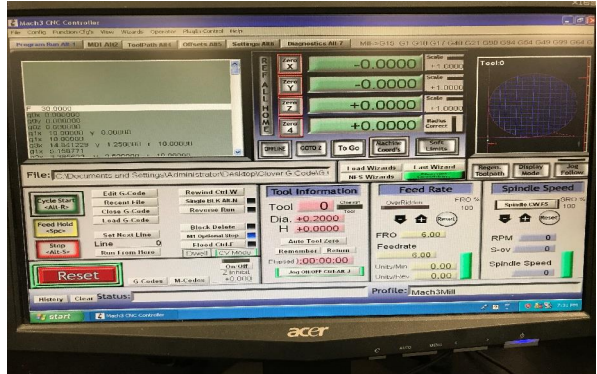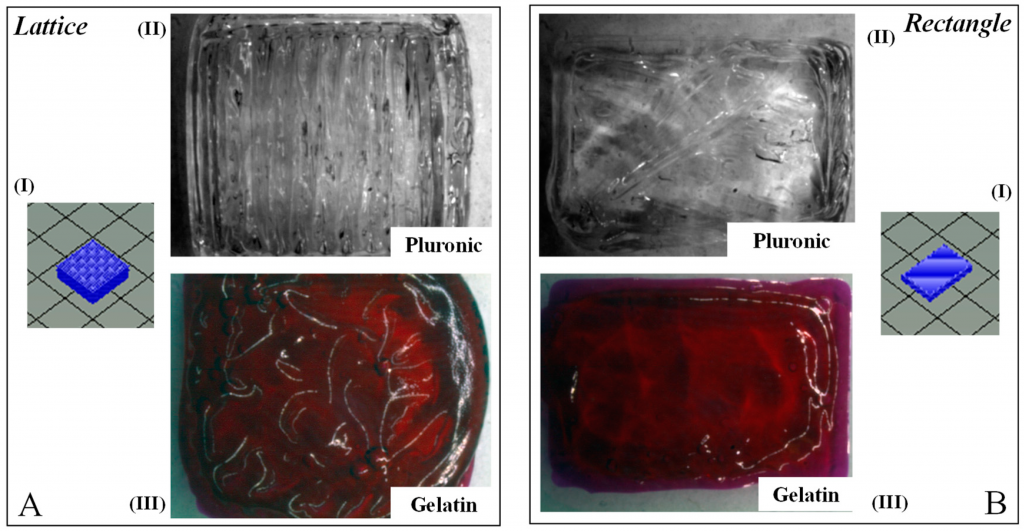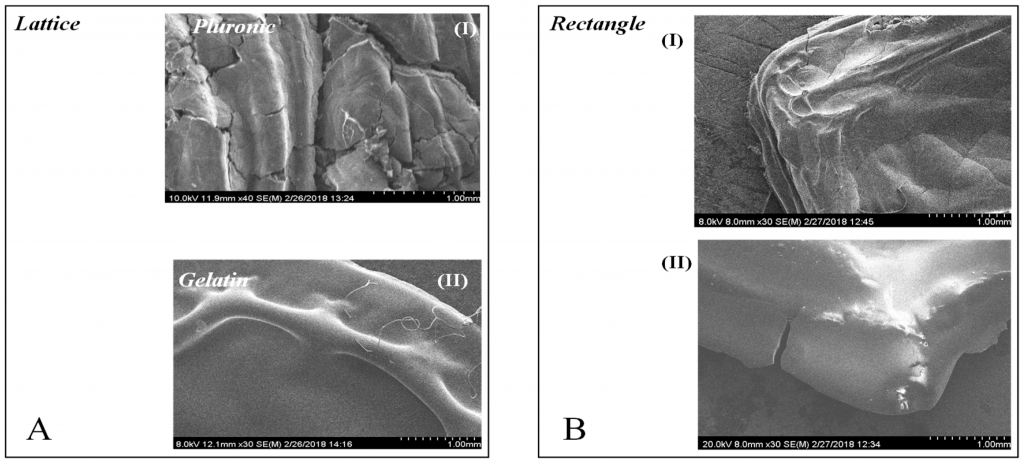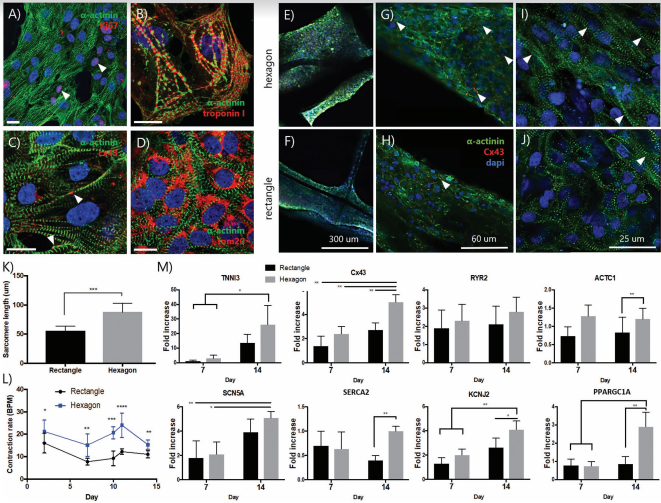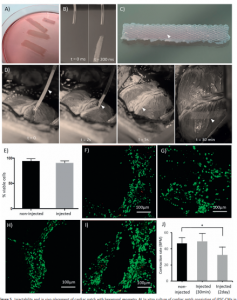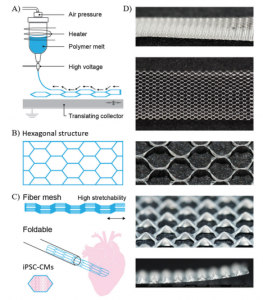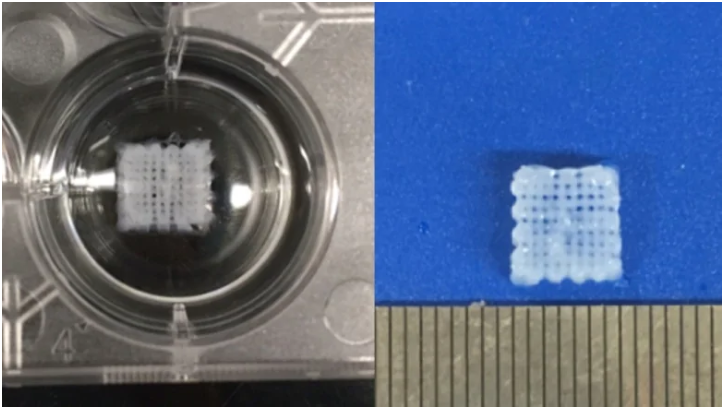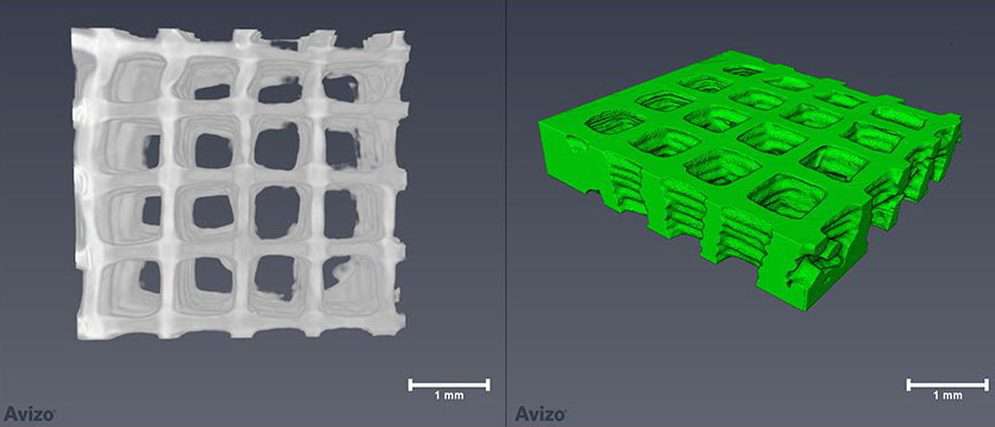In ‘The revolution will be open-source: how 3D bioprinting can change 3D cell culture,’ authors Robert D. Bruno, John Reid, and Patrick C. Sachs explore the revolutionary aspect of 3D scaffolds in bioprinting, with tissue engineering spanning such a wide range in medicine today.
While 3D printing is impacting nearly every industry around the globe it would seem, within the medical realm, the technology is also touching virtually every aspect from breast cancer research to the dental industry.

Example of a coordinated print of clusters of red fluorescent protein (RFP) labeled MCF12a cells at distances of 200µm in a linear array. Image taken 24 hours post-print. Scale bar = 200µm.
For most researchers, common types of substrates used in tissue engineering are membrane rich extracellular matrix (ECM) and collagen extracted from rattails.
“The processes of 3D culture in these two substrates has remained unchanged for nearly half a century: cells are either mixed with unpolymerized matrix to disperse them randomly throughout the substrate upon polymerization or overlaid randomly on top of a preformed hydrogel. While effective in generating organoid/tumoroid structures, the random nature of these processes has many drawbacks that limit the reproducibility and tunability of the experimental design,” explain the authors.
And while one of the greatest aspects in 3D printing today may be the sudden accessibility and affordability of 3D printers (a great example of this would be the ubiquity of such technology in schools around the world, as well as DIY workshops), that has not yet trickled down to bioprinting–with the exception of specialty labs graced with substantial funds to purchase necessary equipment and bionics.
With the inception of this project, the authors developed their own affordable, open access 3D bioprinting system. Meant to be used in scientific applications, the printer is extremely versatile, and adaptable to many different applications—from printing cells to guiding electrodes for direction of electrical pulsing of cells.
“To increase precision and maintain integrity of printed cells, we use pulled glass micropipette syringes as our cell injection ‘printhead,’” state the researchers. “Compared to standard steel needles attached to luer lock syringes, these glass micropipettes have a finer point and reduce sheer force on the cells. Combined, this minimizes disruptions to the cells and allows the hydrogel to seal behind the print. Thus, our system allows for the precise placement of cells, that then self-organize into organoids/tumoroids, making functional structures.”

Custom benchtop 3D bioprinter and its application for printing large mammary organoids. 3D bioprinter constructed off of the Felix 3.0 (FELIXrobotics, NL) platform.
The researchers have maintained a focus on bioprinting within the realm of mammary organoids, with the potential for growing cells into predictable sizes and shapes.
“The key to the guided growth was the fact that mammary epithelial cells (MCF12a and MCF10a) would preferentially grow towards neighboring prints, forming single contiguous organoids. Using this strategy, we generated large contiguous luminal mammary organoids (> 5mm in length). This is in clear contrast to random culture where the dispersion of cells results in random organoid shape and size, with organoids never forming more than a couple of hundred microns in size,” concluded the researchers.
Our studies highlight the ease of access and the utility of the technology for basic cell and cancer biology studies. Thus, we hope to lower the bar of entry further by developing easier-to-access solutions, such as ready-built kits, and a graphic user interface (GUI) to simplify the experimental programming. The system offers a potentially revolutionary step forward for 3D culture models of development and cancer.
Bioprinting is making a huge stamp on the world, as well as the 3D printing realm—a technology that has inspired scientists in laboratories around the world to take on the challenge of tissue engineering.
And while research has already yielded so many positive results, from allowing patients to lead higher quality lives due to innovations like tunable tissue, development of microfluidic techniques, and even tailored skin grafts, the true goal—the ultimate miracle of 3D printing will be that of a human organ.
Once scientists can overcome that hurdle, many patients will rejoice in knowing that they may be able to bypass long-term waiting lists for organs made from their own cells.
What do you think of this news? Let us know your thoughts! Join the discussion of this and other 3D printing topics at 3DPrintBoard.com.

Mature organoid (21 days post-print) formed from coordinated print of clusters of RFP MCF12a cells into a circular array. Resulting organoids have been shown to have contiguous lumens stretching > 3mm in length.
[Source / Images: ‘The revolution will be open-source: how 3D bioprinting can change 3D cell culture’]
The post The Bioprinting Revolution:Accessible 3D Printing to Transform Cell Culture appeared first on 3DPrint.com | The Voice of 3D Printing / Additive Manufacturing.



